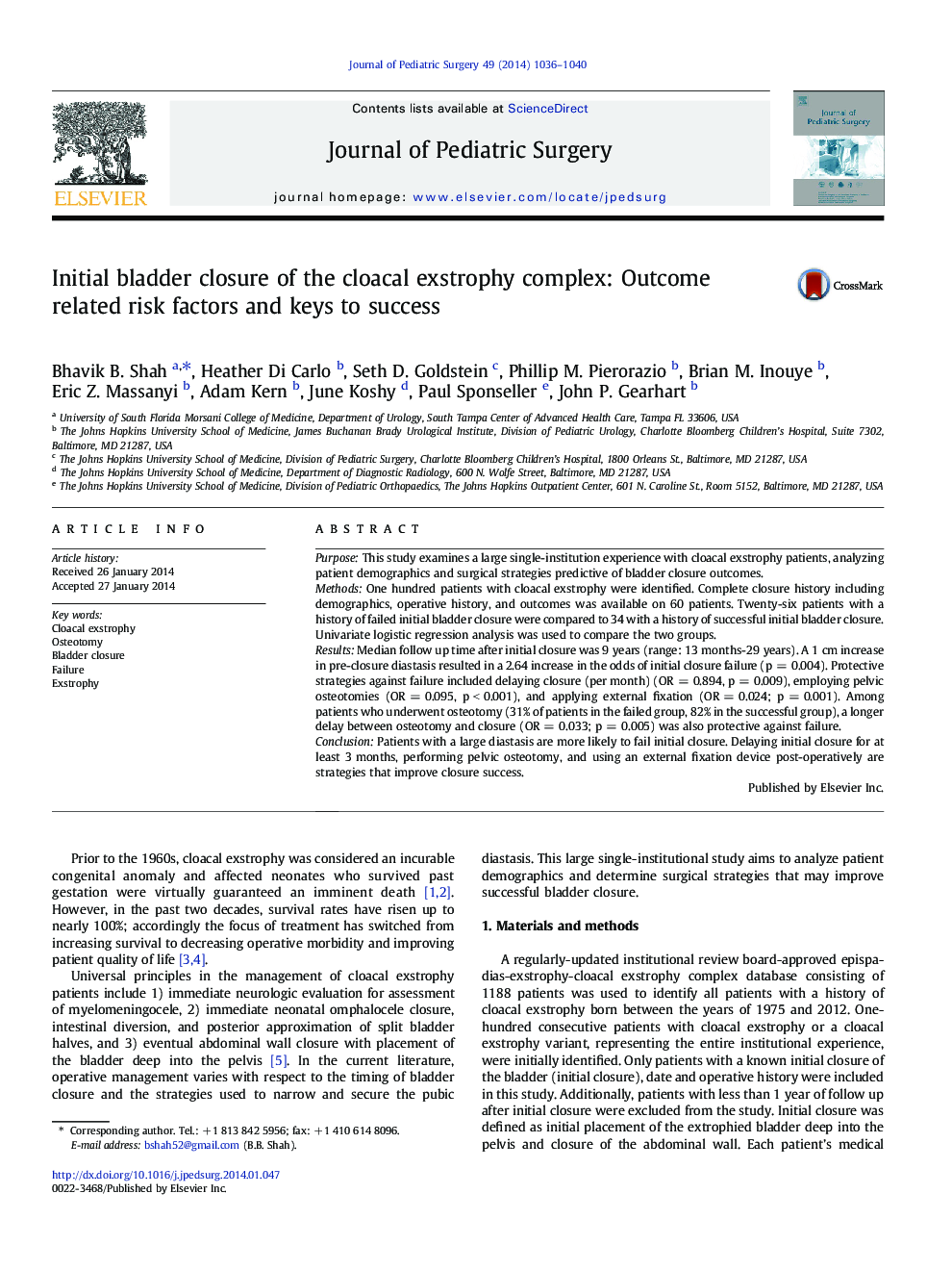| Article ID | Journal | Published Year | Pages | File Type |
|---|---|---|---|---|
| 6217404 | Journal of Pediatric Surgery | 2014 | 5 Pages |
PurposeThis study examines a large single-institution experience with cloacal exstrophy patients, analyzing patient demographics and surgical strategies predictive of bladder closure outcomes.MethodsOne hundred patients with cloacal exstrophy were identified. Complete closure history including demographics, operative history, and outcomes was available on 60 patients. Twenty-six patients with a history of failed initial bladder closure were compared to 34 with a history of successful initial bladder closure. Univariate logistic regression analysis was used to compare the two groups.ResultsMedian follow up time after initial closure was 9 years (range: 13 months-29 years). A 1 cm increase in pre-closure diastasis resulted in a 2.64 increase in the odds of initial closure failure (p = 0.004). Protective strategies against failure included delaying closure (per month) (OR = 0.894, p = 0.009), employing pelvic osteotomies (OR = 0.095, p < 0.001), and applying external fixation (OR = 0.024; p = 0.001). Among patients who underwent osteotomy (31% of patients in the failed group, 82% in the successful group), a longer delay between osteotomy and closure (OR = 0.033; p = 0.005) was also protective against failure.ConclusionPatients with a large diastasis are more likely to fail initial closure. Delaying initial closure for at least 3 months, performing pelvic osteotomy, and using an external fixation device post-operatively are strategies that improve closure success.
